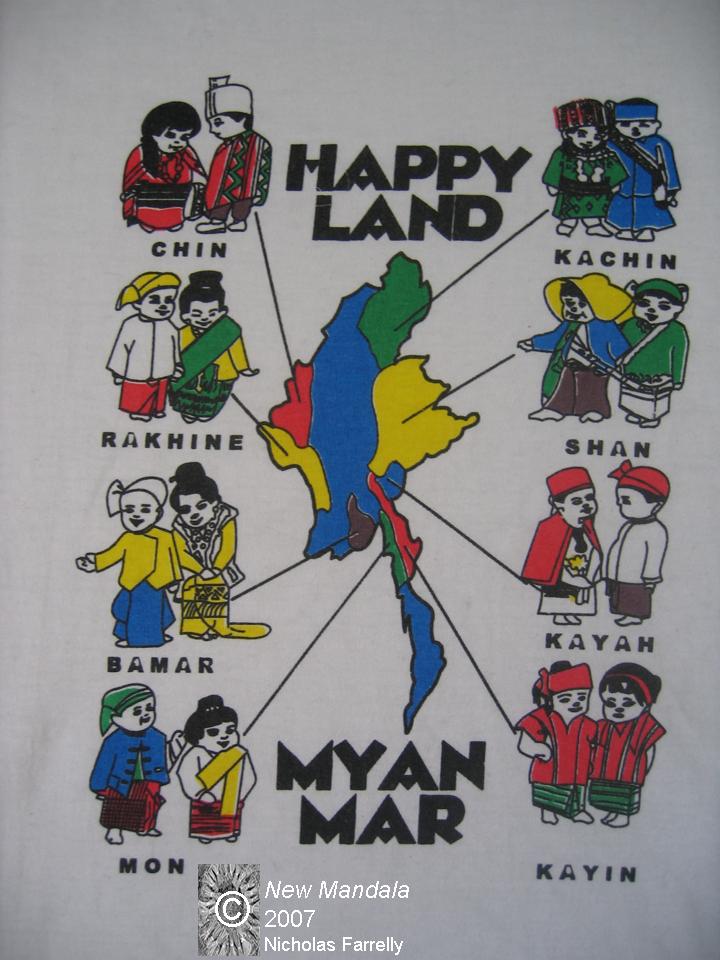Everyone who deals with the country hemmed in between Bangladesh, India, China, Laos and Thailand gets used to the politics the swirl around its name. While on New Mandala I tend just to call the place Burma, in my academic writing I have, for many years now, usually introduced the government of Myanmar and the people/country of Burma. My justification is that the parts of the country I tend to describe in detail see significant and ongoing contestation about issues like sovereignty and territorial control.
I know there are many others who run with Burma/Myanmar as a compromise, and there those who long ago accepted Myanmar as the universal option. I can certainly see why.
Of course I also understand why the topic has generated a huge amount of discussion, including this thoughtful essay (on “Burmaphiles” and “Myanmarites”) from last year. I recall once giving a radio interview to a journalist in Singapore who, after a couple of minutes, cut me off and said, “I’m very sorry, sir, but we can’t call the country that. It must be Myanmar.” We had to start the interview again.
Now I note that the Financial Times has recently decided to switch from Burma (which has remained the British standard) to Myanmar. Here are their reasons:
First, the term Burma has become increasingly loaded. Used on our news pages, it strongly implies we do not approve of the government in power. On our editorial pages, we are perfectly at liberty to criticise a government, that even after tentative steps towards reform, lacks legitimacy. But in the rest of the paper, the term undermines our objectivity.
Second, the name Myanmar has gained growing international acceptance. It is used by the United Nations, by the Association of South-East Asian Nations (which Myanmar will chair in 2014) and even by Amnesty International. True, the US and the UK, among others, still use Burma. Yet even some long-time campaigners for democracy find it increasingly awkward to use the old name.
Third, Myanmar is not some crackpot invention. It, or a derivative, has been used to describe people around the Irrawaddy valley for 1,000 years. A few hundred years ago, the colloquial form, Bama, appeared, and was adopted by the British because they found it easier to pronounce. For many, Burma carries a colonial tinge. Finally, many of the country’s non-Burmans, a third of the population, regard Myanmar as more inclusive. It smacks less of domination by a majority ethnic group.
The editorial then goes on to argue that:
The Myanmar/Burma debate, however, has become politicised. Both terms, admittedly, carry baggage but on balance, we believe that Myanmar is now the less loaded. We adopt it on the grounds of neutrality.
What do New Mandala readers think? Do you feel strongly about the issue? Is Myanmar going to get cool now? Are we seeing the last gasp for Burma? By 2020 will it sound as quaint as Siam?
Readers looking for more on the names of Southeast Asian countries may find this 2010 analysis interesting. It introduces an historical perspective on Siam, Burma, Burmah, etc.
 Facebook
Facebook  Twitter
Twitter  Soundcloud
Soundcloud  Youtube
Youtube  Rss
Rss 